The Best 3PL Software
We reviewed the best warehouse management software to help 3PLs improve inventory control, order accuracy, and fulfillment speed. Explore side-by-side comparisons, key features, and expert insights in our buyer’s guide.
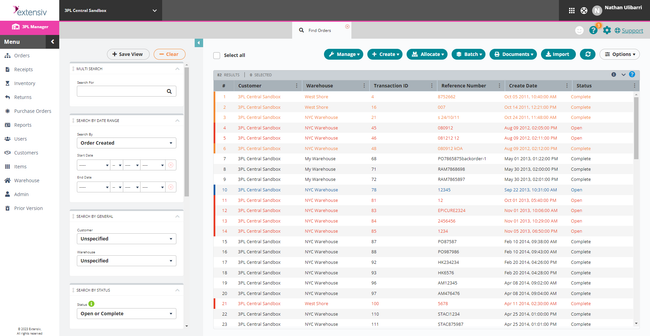
- Cloud-based third-party logistics solution
- Easily access transaction and tracking info
- Integrable with QuickBooks and other accounting solutions
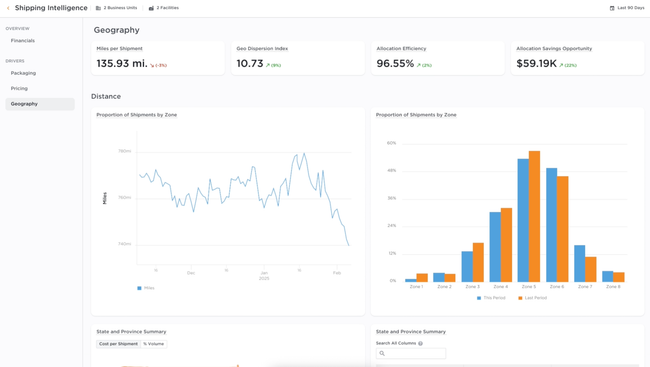
- Purpose built for 3PLs, retailers, and CPG/Brands
- Fast onboarding only takes weeks
- Scales with growth to support new warehouses and clients
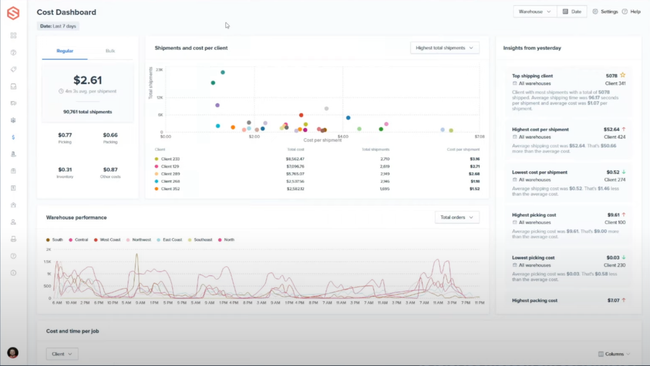
- Integrates with WooCommerce, Amazin, Shopify, eBay, Walmart, and more
- Offers two-day and overnight delivery options
- Provides automatic notifications for stock replenishment and allows setting of reorder points
We tested and reviewed the top 3PL warehouse management systems for healthcare and pharmaceutical logistics, food and beverage distribution, retail eCommerce, and building material suppliers within the 3PL sector. Below are our expert reviews, along with a complete buyer’s guide to help you choose the right system for your logistics operation.
- Extensiv: Best for Distribution-Based 3PLs
- Deposco: Best Cloud Native WMS with AI Intelligence
- ShipHero: Best for eCommerce 3PL
- NorthStar WMS: Best Billing & Invoicing Module
- Körber: Best for Healthcare and Pharmaceutical 3PLs
- Infoplus WMS: Best for Multi-Client Handling
- Logiwa IO: Best for Automated Warehousing
- Magaya: Strong Expiration Date Tracking
- Blue Yonder: Best for Load Building Services
Extensiv - Best for Distribution-Based 3PLs
Extensiv’s 3PL Warehouse Manager can enhance your order picking and packing, saving you time and expenses if you handle a diverse range of products for multiple clients. 3PL Warehouse Manager offers a suite of integrated features, including SmartPack and SmartScan.
You can configure this 3PL software to align with your specific operational needs. For example, you can set up auto-batching rules to group orders by customer or shipping carrier. The system will generate a batch pick list, directing your staff to pick items for multiple orders in one trip, reducing the travel time within the warehouse. As they pick the items, they can utilize SmartScan to scan barcodes, ensuring that each item matches the order requirements.
SmartPack automates the packing process by selecting appropriate packing based on the items’ dimensions and weight. It also offers manual specification of package contents, offering the flexibility to handle custom orders with unique packaging requirements. Your staff can define package details directly within the system, ensuring that each order is packed to exact specifications, enhancing order accuracy and client satisfaction.
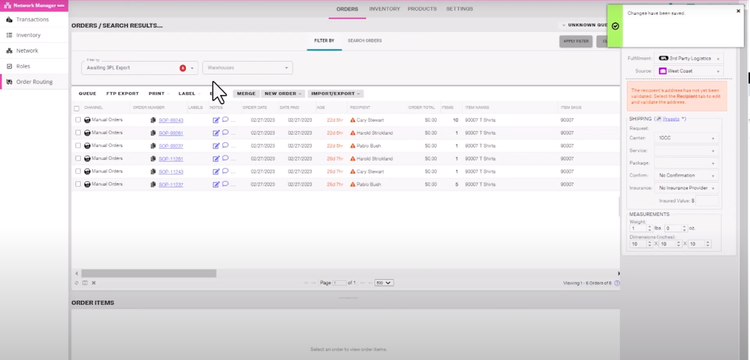
For more information on Extensiv, read our full review.
Deposco - Best Cloud Native WMS with AI Intelligence
Deposco Bright Warehouse’s capabilities, such as supply chain intelligence and executive intelligence features, enhance decision-making for 3PLs across the order lifecycle. These AI-driven tools analyze client data to identify industry trends, detect bottlenecks, and offer actionable insights for optimizing warehouse operations through role-based dashboards.
The executive intelligence feature enables real-time tracking and helps improve customer satisfaction by providing visibility into metrics like total shipping costs per order or comparing carrier rates to identify cost-saving opportunities. Meanwhile, supply chain intelligence can pinpoint inefficiencies in product shipping from suboptimal locations. This allows 3PLs to reposition inventory strategically, streamlining delivery times and boosting operational efficiency and cost-effectiveness.
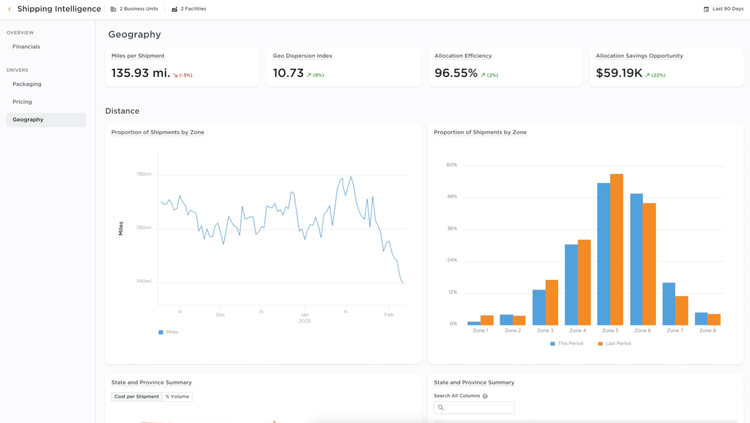
These capabilities are especially beneficial for 3PLs managing multiple tenant companies. Deposco’s tools help create tailored analytics and dashboards to monitor performance at individual tenant levels or across the entire operation.
Get more information on Deposco Bright Warehouse on our product page.
ShipHero - Best for eCommerce 3PL
ShipHero’s batch-picking feature allows you to group several orders together based on similar picking routes. This process optimizes the picking workflow by minimizing travel time across the warehouse. This is a particularly useful tool if you manage a high volume of orders and multiple clients, like direct-to-consumer brands or multi-channel retailers.
When an order is placed, ShipHero automatically consolidates similar orders that share common items or warehouse locations. This batching tool enables your team to pick several orders simultaneously, effectively streamlining the fulfillment process. This 3PL WMS system offers single-item and multi-item batch picking for different order types.
- Single-item batch groups multiple single-item orders into one batch, allowing pickers to collect all required items in one trip. This can be beneficial if you have high-volume sales.
- Multi-item batch collects items for multiple orders, each with different qualities or SKUs, and puts them into separate totes. This method saves you from sorting products during packing and shipping.
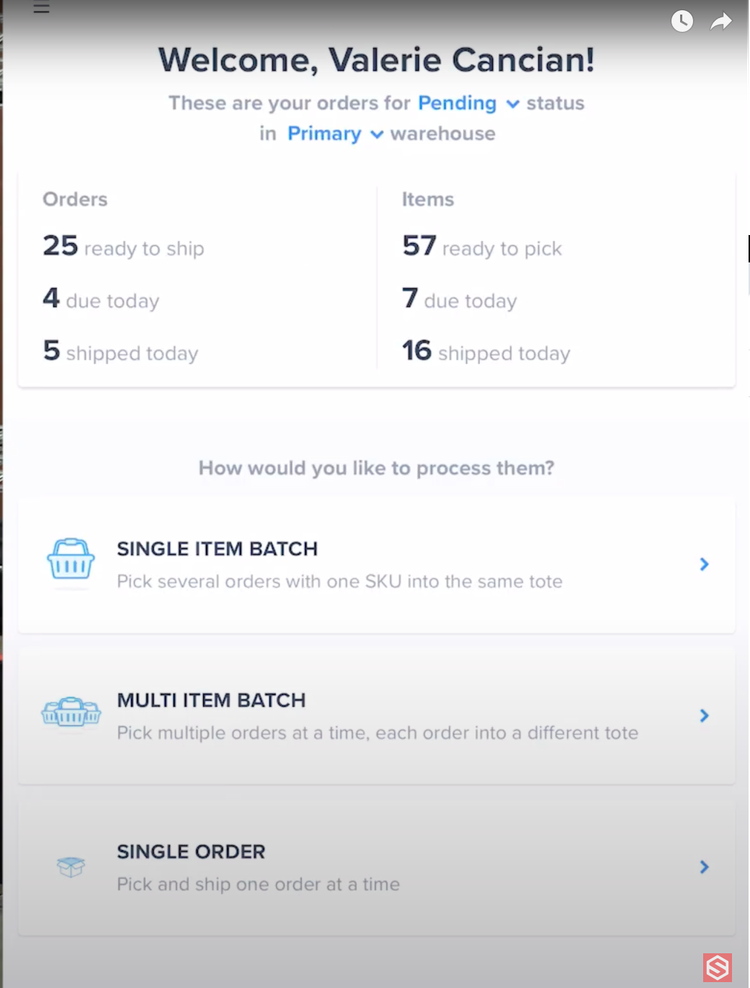
The system creates a batch that includes orders with either the same shipping destination or identical products, which can be advantageous if you manage diverse client needs. Once the system generates the picking list, your team can efficiently pick products in a logical sequence, following the optimal route through the warehouse. As each item is picked, team members scan the item’s barcode, enabling real-time inventory updates and tracking which items have been picked for specific orders. This approach reduces the time spent on picking and enhances productivity, allowing your team to fulfill more orders in less time
After all items are collected, they’re packed and labeled for shipment. ShipHero’s system will then automatically update the order status, ensuring that your clients receive accurate and timely shipment information.
However, ShipHero has relatively high pricing starting at $1,995/month, in comparison to systems like Extensiv at $599/month.
Read our full ShipHero review for more information.
NorthStar WMS - Best Billing & Invoicing Module
NorthStar WMS makes it easy to automate complex invoicing and track charges across multiple clients. You can set rates for each customer, including:
- Pallet-based charges for better warehouse space usage
- Inbound and outbound handling charges per transaction
- Storage fees based on space used or duration
- Standard handling and ancillary fees (optional add-ons)
Additionally, this 3PL warehouse management system supports one-time, recurring, and per-unit pricing so you have more control over how you charge clients. Plus, with automated invoicing, NorthStar tracks and ties all charges to specific warehouse activities. This makes your finanical operations more accurate and transparent.
Plus, NorthStar simplifies multi-client invoicing by organizing charges per customer. The system even auto-generates invoice reports outlining service types, unit prices, and total fees. This gives you a clear audit trail while making accounting easier. Pricing ranges from $1,000 to $5,000 per month depending on your user count and desired features.
Körber - Best for Healthcare and Pharmaceutical 3PLs
Adhering to strict regulations requires rigorous documentation, tracking, and frequent audits. Körber offers strong compliance features that ensure adherence to stringent industry standards, like the Drug Supply Chain Security Act (DSCSA), the Falsified Medicines Directive (FMD), and the Food Safety Modernization Act (FSMA).
Körber Warehouse Management System (WMS) allows you to scan each new product upon entry and record its serial number, creating an immediate digital audit trail. This system verifies that all products meet regulatory requirements before acceptance, reducing non-compliance risk. Körber then links these serial numbers to specific destinations, allowing for precise tracking throughout the supply chain. It also monitors expiration dates and batch numbers to ensure all products are sold safely and effectively.
When Körber receives an order, it selects products based on their serial numbers to ensure accurate and compliant picking. This cloud 3PL software also automates documentation, generating invoices and shipping labels containing necessary compliance information, such as drug interactions, warnings, expiry dates, and indication or use. Before dispatch, it conducts a final verification to ensure that all products in the shipment comply with regulatory standards, further safeguarding pharmaceutical 3PLs against compliance issues.
Read our full Körber review for more information.
Infoplus WMS - Best for Multi-Client Handling
Infoplus WMS supports 3PL providers, such as direct-to-consumer 3PLS and cold storage 3PLs, through its multi-client handling capabilities. These enable you to efficiently manage numerous clients while ensuring a clear separation of operations. You can configure workflows tailored to each client’s unique operational needs, accommodating different picking strategies. For example, where one client requires wave picking, another might use zone picking.
This automation streamlines operations and can minimize errors, enhancing overall service quality. Infoplus also provides your clients access to dedicated portals where they can monitor their inventory in real-time and receive alerts for low-stock items.
You can use the system’s reporting tools to create custom dashboards for each client, giving them insights into their specific operations, such as order fulfillment metrics, inventory levels, and sales performance. This capability allows you to tailor your services to meet each client’s specific requirements and enables you to provide additional support or strategic adjustments to clients who may need it.
For more information on Infoplus WMS, read our full review.
Logiwa IO - Best for Automated Warehousing
Logiwa IO offers automated order routing, task management, and a no-code workflow builder, making it ideal for 3PLs running fast-paced, high-volume warehouse operations. Logiwa’s rule-based automation helps streamline every step from receiving to shipping for 3PLs managing DTC, retail, wholesale, and even monthly subscription boxes.
You can set up picking logic to assign the fastest fulfillment method based on an item’s type, destination, or inventory levels. For example, the system can prioritize wave picking for bulk orders and switch to zone picking for busier peak hours. Logiwa also supports kitting, bundling, and returns, allowing you to set up rules for how returns are restocked, repackaged, or written off.
Logiwa also includes a visual, no-code automation builder, where you can drag and drop fulfillment rules and configure triggers and conditions that fit your exact warehouse workflows. These can help manage unique scenarios like routing fragile items to specific packing zones or flagging high-value orders for review.
Pricing for Logiwa starts at around 300/month for its DTC plan. For 3PLs, Logiwa offers a specific 3PL Accellerator plan that requires a custom quote.
Magaya - Strong Expiration Date Tracking
Magaya has a strong expiration date tracking system that can help you better manage perishable goods, certifying that products are rotated correctly throughout the warehouse. Many cold storage items, such as food or pharmaceuticals, have strict expiration dates to ensure that only safe, compliant products are distributed. This expiration date tracking helps protect consumers and meet regulatory requirements.
When you receive inventory, you can manually input expiration dates into the system or integrate it from suppliers through EDI systems like TrueCommerce. Magaya will continuously monitor the status of each item, calculating the remaining shelf life and tracking any changes in conditions that could possibly affect the expiration date.
As items near expiration, this 3PL WMS software will send automated alerts via email or within the software. You can then decide whether to prioritize these items for picking, discount them for sale, or remove them from your inventory count. If you’re managing a high volume of temperature-sensitive products, this can help you manage your stock more efficiently to better utilize space and avoid spoilage costs.
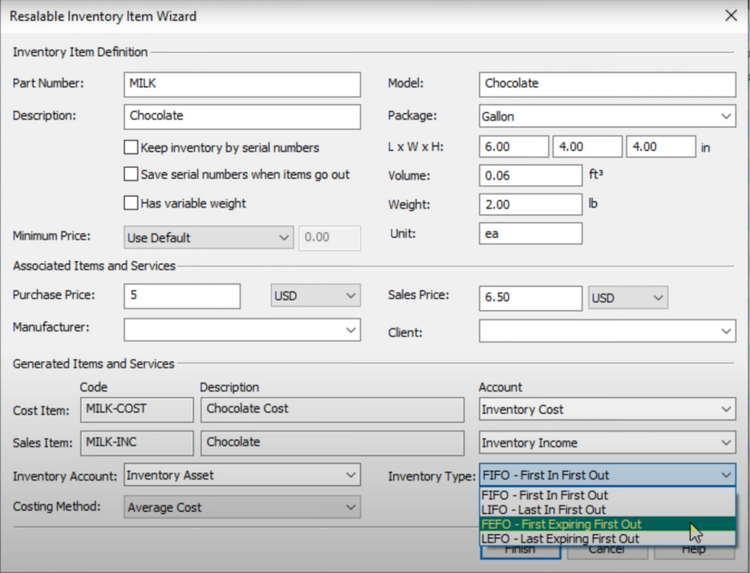
To learn more information about Magaya, read our full review.
Blue Yonder - Best for Load Building Services
Blue Yonder’s load-building services (LBS) can optimize transportation efficiency by creating inventory-aware, 3D representations of truckloads. This visualization can enhance the planning and execution of loading configurations by offering spatial awareness, damage prevention, and efficiency optimization.
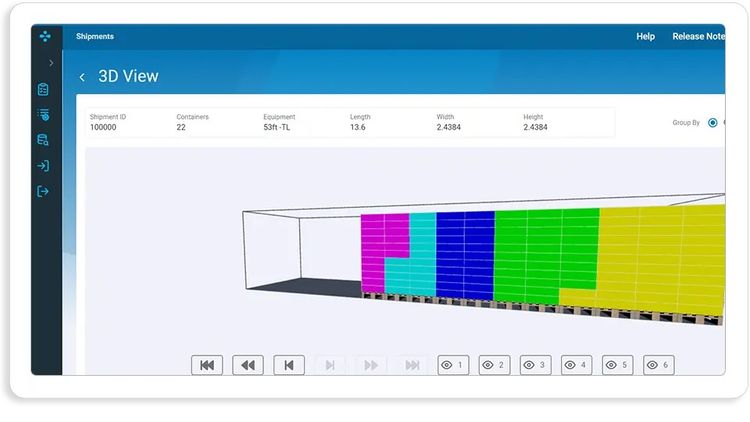
This 3D view visualizes stacking and orientation to show how products are arranged within the truck. This allows you to identify potential areas for improvement and ensure optimal space utilization. This view aids in planning load configurations that reduce loading and unloading times, contributing to overall operational efficiency.
With LBS, you can combine multiple orders destined for the same region into a single shipment, reducing the number of trips and associated costs. The system also identifies high-priority orders to ship promptly, minimizing the risk of delays. It does this by replanning orders to ensure timely fulfillment while adhering to inventory policies.
It can support complex load structures and accommodate pallet types, including double, mixed layer, mixed item, and sandwich pallets, making it adaptable to different shipping scenarios. Additionally, the tool incorporates dimension and axle weight constraints to prevent overloading and adhere to transportation regulations. This comprehensive approach to load building reduces loading time and positions you to deliver strong service to your clients.
For more information on Blue Yonder, read our full review.
Other Systems We Like
Fishbowl Inventory offers integrations with major eCommerce platforms like Shopify, WooCommerce, and Amazon, making it another suitable choice for eCommerce 3PLs. These integrations allow you to streamline your order management, automate inventory updates, and ensure that all your stock levels are accurate across numerous sales channels. Fishbowl has standard 3PL capabilities, but its strengths lie more in inventory control than in advanced logistics tools found in other options on our list.
Systems We Don’t Like
While Zoho Inventory works for basic in-house stock management, it’s not built for 3PL operations. It lacks key features like multi-client inventory tracking, storage and handling fee billing, advanced picking methods, and client-facing portals. Without these, it simply can’t support the complexity of third-party logistics.
What is 3PL Software?
Third-party logistics (3PL) software is a specialized warehouse management system designed for businesses that manage inventory and fulfillment operations for multiple clients. Unlike traditional warehouse management systems built for single companies, 3PL software maintains separate inventories, orders, and billings for multiple clients within a single platform.
At its core, 3PL software allows businesses to operate as an extension of their customers’ logistics operations. It supports account-specific workflows, keeps client data separate, and provides customer portals for real-time visibility into inventory levels and order history. For 3PLs handling multi-client logistics, the software helps maintain efficiency, transparency, and operational control.
Core Features
The main goal of this software is to streamline and optimize logistics and supply chain processes. Most 3PL systems will include features like:
- Warehouse Management: Supports shared warehouse environments with client-specific storage rules, barcoding/RFID scanning, and real-time tracking for receiving, picking, and packing.
- Inventory Management: Monitors inventory by client across multiple locations or sites. Can lot or serial number tracking for accurate cycle counts and replenishment alerts.
- Order Management: Consolidates incoming orders from eCommerce platforms, EDI, or client portals. Automates order routing and status updates to reduce shipment and delivery time.
- 3PL Billing: Supports fixed monthly service/storage fees and variable fulfillment charges. Enables accurate billing based on a client’s order volume, storage usage, and value-added services.
- Multi-Client Management: Keeps each client’s orders, inventory, and billings separate so reports can be made independently. Clients can access their own real-time dashboards to track activity without interfering with other client accounts.
- Labor Management: Measures labor productivity by task, shift, or employee. Helps 3PLs track time spent per order or pick list and help manage labor efficiently.
- Shipping and Handling: Supports carrier integrations, rate shopping, and automated label printing to simplify outbound logistics. Can apply client-specific rules for packaging, carrier selections, and included documentation (packing slips or bills of lading).
- Route Planning: Optimizes delivery routes by considering delivery windows, truck capacity, and real-time traffic to lower costs and improve delivery performance.
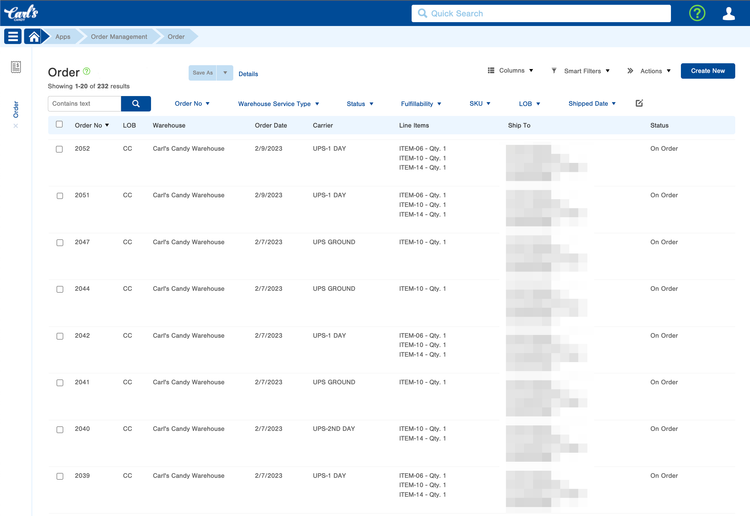
Common Benefits
Coordinating third-party logistics involves complex, fast-moving operations. 3PL software has been built to provide the following benefits:
- Automate Regulatory Compliance: Keeping up with changing regulations, such as in the food and healthcare industries, can be daunting. 3PL software helps ensure regulatory adherence by automating compliance processes and maintaining necessary documentation.
- Reduce Transportation Costs: Transportation costs can skyrocket without proper route and load optimization. A system with built-in load services can help you save trips and load your trucks to their maximum capacity.
- Improved Customer Service: A 3PL software can provide your clients with timely updates on shipments and accurate delivery times, enhancing customer satisfaction. Some systems provide customer portals to view their own inventory levels in real-time without having to reach out to your sales reps.
- Reduce Manual Entries Entering orders manually can slow down the fulfillment process and lead to errors. A 3PL system that integrates with eCommerce platforms lets you receive and process your client’s orders automatically without any manual entries.
Software Trends
Here are three major trends reshaping 3PL software:
AI Forecasting and Labor Optimization
Platforms like Extensiv 3PL and Logiwa IO are coming out with AI tools to improve demand forecasting, labor planning, and better optimization of your warehouse. These systems will analyze real-time order patterns and historical data to suggest ideal picking paths, schedules, and stock placements.
Client Portals
Increasingly, we’ve seen 3PL platforms prioritizing client-facing portals showing real-time inventory levels, shipment history, and billing information. Systems like Datex FootPrint WMS and 3PL Warehouse Manager now offer customer portals with self-service tools and live data to improve their experience without increasing your support overhead.
No-Code Integration Tools
Modern 3PL platforms are shifting to “no-code” or API-first platforms, making it easier to integrate with your existing tech stack. Developers like ShipBob and Logiwa IO allow you to easily connect with your current ERP, accounting systems, eCommerce platforms, or shipping and transportation software without coding experience. Simply choose the apps you want to integrate with, drag and drop what fields you need to be included, and set rules to have your data synced in real-time.
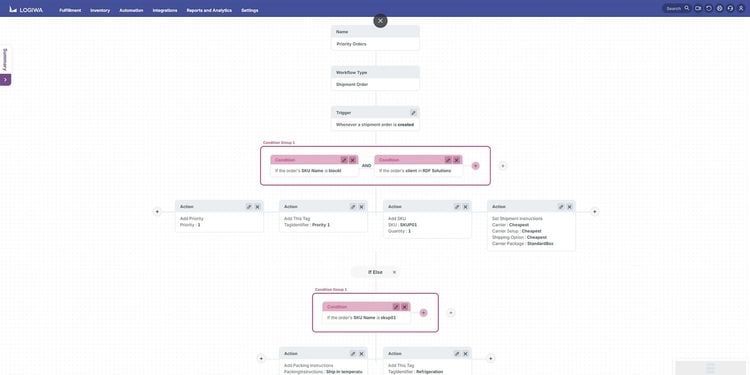
Who Uses 3PL Software?
3PL software is used by third-party logistics providers that store, manage, and ship goods on behalf of other companies. These businesses often serve eCommerce brands, manufacturers, wholesalers, and retailers that outsource their warehousing and fulfillment operations.
Common users include:
- Dedicated 3PL companies managing multiple clients across one or more warehouses
- Fulfillment centers handling high-volume eCommerce or wholesale shipments
- Transportation and freight companies expanding into warehousing or value-added services. Often freight companies will use freight forwarding software
- Cold storage or specialized providers that manage perishable inventory with specific handling requirements
- Multi-client warehouse operators that offer custom storage, kitting, or assembly services. Contract-based manufacturers often utilize contract manufacturing software
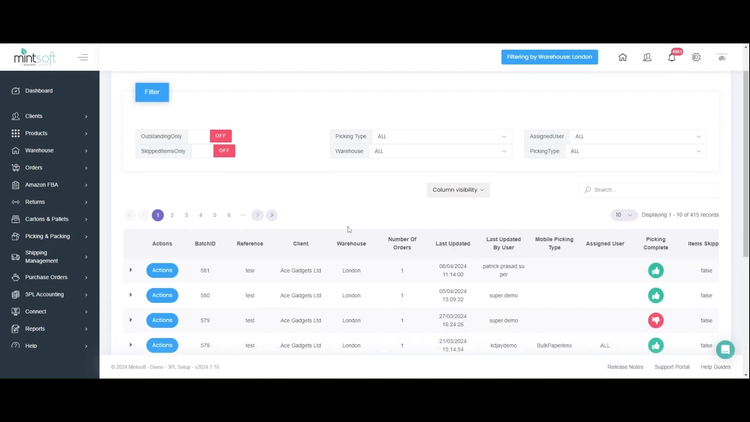
How to Choose Software
The best type of 3PL software for your business depends on the size and scale of your operations:
- Small businesses may prefer using a turnkey software solution that offers full logistics capabilities out-of-the-box without requiring extensive customization or detailed integration with additional logistics systems. This might be the best choice if your ideal system can be run over the Internet.
- Medium-sized businesses may benefit from comprehensive capabilities offered by 3PL software packages like RFID tracking, enabling products, tools, and vehicles to be tracked automatically through wireless RFID tags and scanners.
- Large enterprises should seek software that integrates seamlessly with existing or legacy software systems to ensure a steady business flow with minimal disruption to existing fulfillment operations or processes. Look for systems that can utilize warehouse robotics and automation.
Pricing Guide
Pricing for 3PL software can vary widely based on warehouse count and size, order volumes, number of warehouse employees, and feature complexity. Below are a few ranges to expect when evaluating 3PL WMS solutions:
Small Business Systems:
- Smaller or startup operations with 1-2 warehouses and under 25 employees can expect costs ranging from $6,000 to $25,000 per year.
Mid-Tier:
- Medium-sized businesses supporting 2-20 warehouses with up to 250 employees can expect costs ranging from $25,000 to $100,000 per year.
High-Tier:
- Large businesses with 20-50 warehouses with up to 500 employees can expect costs ranging from $100,000 to $300,000 per year.
Enterprise Systems:
- Larger organizations that support nationwide or global operations with 50+ warehouses and 500+ users can expect systems starting at over $200,000 per year.
On-premise deployments still exist, but mostly at the enterprise level. Licensing and setup fees range from $50,000 to $500,000, not including infrastructure or maintenance costs.
Frequently Asked Questions
Who Uses 3PL Software?
Third-party logistics providers, freight forwarders and brokers, warehousing and distribution companies, and businesses that outsource their logistics use 3PL software.
It’s built to handle the various needs of multiple clients, each with its own set of operational processes and billing requirements, including eCommerce. With the right system, third-party logistics operations can generate more revenue, automate operations, and enhance customers’ experiences.
What’s the difference between 3PL and WMS software?
3PL software is built specifically for third-party logistics providers who manage warehousing and fulfillment for multiple clients. It includes tools for handling client accounts, billing, order routing, and inventory across multiple businesses.
WMS (Warehouse Management System) software focuses on internal warehouse operations–like inventory tracking, picking, packing, and shipping–typically for a single business or in-house fulfillment.
In short, 3PL systems include WMS features but add multi-client management, billing, and integrations specifically for third-party logistics providers.
Can 3PL software handle multiple clients or warehouses?
Yes, most 3PL software is specifically designed to support multiple clients, warehouses, and inventory locations. This includes client-specific inventory tracking, order routing rules, custom billing, and reporting.
Top platforms, such as Extensiv 3PL Manager, allow you to manage each client’s inventory separately while maintaining control over the entire warehouse, so you can scale without duplicating systems or processes.




























































